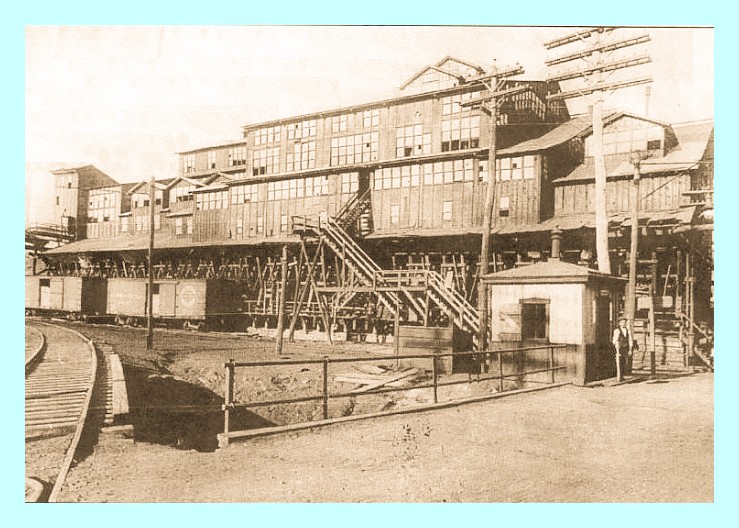An undated photograph of the St. Nicholas Colliery Breaker, located between the villages of Wiggans and St. Nicholas, Schuylkill County, Pennsylvania.
From a series of articles that appeared in the Pottsville Republican and Herald in 1997:
The St. Nicholas Colliery was located in the Waste House Run a short distance above its junction with the Mahanoy Creek.
The original opening was a drift driven on the South Dip Buck Mountain Vein by Henry Geist in 1858 and mined by him until 1861, when he took in a partner, Henry L. Cake.
In making improvements to the colliery, Geist was fatally injured, and the operation continued under Cake, who gave the colliery the name of St. Nicholas. Cake mined until 1864.
In 1864, the Mammoth Vein gangway had advanced eastward 4,000 feet and the Buck Mountain Gangway 3,300 feet.
In 1866, the St. Nicholas Coal Company sank the slope 366 feet on the South Dip Mammoth Vein, from which tunnels were driven to other veins. In 1875, miners extended the slope to the second level.
The St. Nicholas Coal Company operated the colliery until 1880 when it was purchased by the Philadelphia & Reading Coal & Iron Company, which operated it until 1884, when all mining was suspended with the exception of pumping that continued until 1885, when the colliery was abandoned.
In 1889, the Philadelphia & Reading Coal & Iron Company reopened the colliery and sank a tender slope 680 feet on the South Dip Mountain Vein west of the hoisting slope, which it extended to the second level at the same elevation as the hoisting slope.
Tunnels were driven north to the Holmes veins, on which gangways were driven and extensively mined.
In 1889, an underground slope sunk 330 feet on the South Dip Mammoth Vein and a tunnel was driven across the basin 475 feet to the North Dip Buck Mountain Vein.
In 1910, an electric generating plant was installed for lighting the colliery buildings and, in 1913, an electric coal hoist was installed at the Buck Mountain Slope water-level drift.
In 1918, a modern box car loader was put into service at the breaker. There were numerous short tunnels driven during the mining process that continued until February 28, 1928, when the colliery slopes were abandoned and the breaker was removed to make way for the new Sr. Nicholas Central District Breaker, built in 1931. (The drift ceased mining June 6, 1931).
Total shipments from the St. Nicholas Colliery were 9,087,876 tons of coal through 1928.
_______________________________________________
Article by Frank Blase, Historian, Reading Anthracite Company Historical Library, Pottsville Republican & Herald, June 7, 1997. Obtained from Newspapers.com.
Corrections and additional information should be added as comments to this post.
